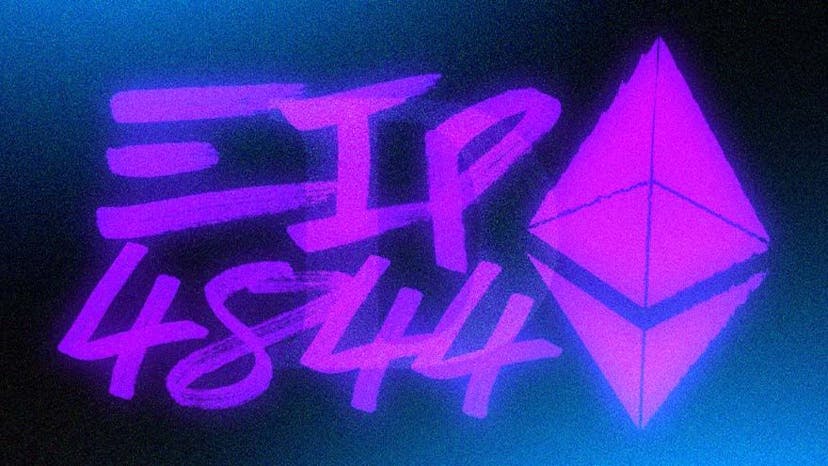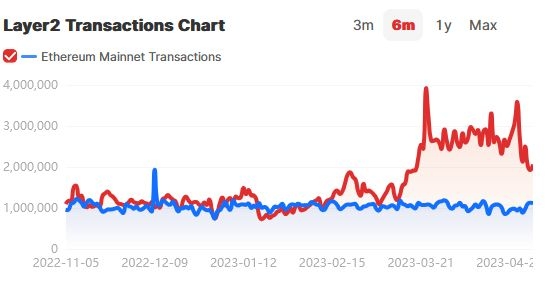Ethereum Developers In ‘Final Stages Of Planning’ Next Major Upgrade
‘Dencun’ Will Focus On Scaling To Reduce Transaction Costs
By: Samuel Haig • Loading...
DeFi
Despite Ethereum’s Shapella upgrade going live just three weeks ago, the Ethereum Foundation is already looking ahead to the network’s next upgrade, dubbed Dencun.
According to a May 3 blog post from Ethereum Foundation community manager Tim Beiko, Ethereum’s core developers are already in “the final stages of planning” for Dencun.
“We currently have a tentative set of [Ethereum Improvement Proposals] included in the next network upgrade,” Beiko said.
The primary update included in Dencun is EIP-4844, also known as “Proto-Danksharding” or “The Surge.” Researchers anticipate the update will reduce the costs associated with transacting on Ethereum Layer 2 by orders of magnitude. Beiko did not offer any timeline for when Dencun might be activated.
The news comes as Layer 2 networks have emerged as the leading Ethereum scaling solution. Layer 2s surpassed the Ethereum mainnet by daily transaction volume in February, with L2s currently beating Ethereum by double with 2M transactions daily. L2 transactions peaked at nearly 4M six weeks ago, while mainnet activity trended steady at roughly 1M each day for the past six months.

L2s represent a combined total value locked (TVL) of $9.3B, according to L2Beat, equal to one-fifth of the entire DeFi TVL, according to DeFi Llama.
The Surge
EIP-4844 will replace the blockspace-intensive “calldata” currently stored on-chain alongside transactions with “blobs,” with analysts tipping the upgrade will improve Layer 2 throughput by orders of magnitude. Unlike calldata, Blobs do not compete with Ethereum transactions for gas, significantly reducing the blockspace associated with processing transactions on L2.
In a recent appearance on The Defiant Podcast, Carl Beekhuizen of the Ethereum Foundation said the cost of storing data on-chain is the main barrier restricting the scalability of Layer 2 networks. “The idea behind Danksharding and EIP-4844 is to provide really cheap data storage… so the L2s can provide cheap transactions to their users,” Beekhuizen said.
Other Confirmed Upgrades
Beiko confirmed that Dencun will include at least three other upgrades.
EIP-1153 will introduce “transient storage,” which allows certain data to be discarded from transactions rather than stored on-chain. The upgrade will further improve blockspace availability and reduce the costs associated with storing data on-chain.
EIP-6475, also called SSZ Optionals, is a companion to proto-danksharding — which introduces a new type of transaction that uses simple serialize (SSZ) encoding. Beiko said EIP-6475 ensures transaction formats are forward-compatible future SSZ-upgrade devs plan to introduce in the future.
EIP-6780 will deactivate the SELFDESTRUCT opcode, which is used to terminate a smart contract. Beiko said the function is not behaving as expected for certain use cases, adding that client teams are currently considering different solutions for modifying the code.
Ambitious Roadmap
Ethereum is currently undergoing a period of significant transformation which began with the Merge last September, transitioning Ethereum to Proof of Stake consensus. Once the Surge is live following Dencun, Ethereum will undergo three other major upgrades in the form of the Verge, the Purge, and the Splurge.
The Verge will introduce Verkle trees and stateless clients to make Ethereum more lightweight and bolster decentralization. Vitalik Buterin, Ethereum’s co-founder and chief scientist, said that after The Verge, users will be able to launch nodes “without having hundreds of gigabytes on your disc.”
The Purge will remove old history from the blockchain, meaning nodes won’t be required to store the entire history of the blockchain. The network will delete transaction data after it is 30 days old, with infrastructure providers like the Etherscan block explorer expected to continue compiling older historical data.
Finally, the Splurge will introduce “all of the other fun stuff” bolstering the network’s efficiency and performance not included in other upgrades.
Ethereum’s core devs expect the network will enter a phase of relative stability following the Splurge, with Vitalik predicting that Ethereum “will look more like a system that optimizes for safety and predictability.”
Advertisement
The Defiant Daily
“an industry must-read”
Get an edge in Crypto with our free daily newsletter
Know what matters in Crypto and Web3 with The Defiant Daily newsletter, Mon to Fri
90k+ Defiers informed every day. Unsubscribe anytime.





